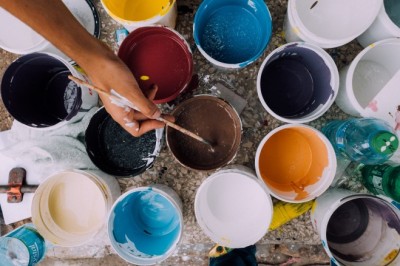Should You Use Ceramic or Porcelain Tile?
What do you recommend to tile my kitchen backsplash with? Over the years, I have answered that question many times.
My response is in the form of a question. Where are you installing? Floor? Wall? Backsplash? Patio?
When it comes to what tile to use on the wall, floor or patio, people have not a clue as to what to use. Customer enjoy it when a person explains what tile to use for their design projects.
Helping someone make a decision that will put their mind at ease and knowing they have made a good selection of ceramic tile for their design project is a very rewarding experience for me .
Porcelain tile has been the "in thing" over the last few years. That is all well and good if by looking at a ceramic tile we could tell the difference between a porcelain or non-porcelain tile. If a tile is not made of porcelain it is a ceramic tile. That assumption is correct.
Ceramic tiles are made from red clay and some from white clay. Red body tiles are easy to identify, where as white body tile are almost impossible to tell if it is porcelain or not.
Here is where the word of the tile manufacturer comes into play. Reputable tile manufacturers mark the tile boxes "porcelain" if they are porcelain.
The better ones, such as Dal-tile(R), Marazzi(R), Crossville(R), Porcelanosa(R), Emser(R) to name a few, label their tile porcelain if they are and ceramic if the tile is non-porcelain.
Porcelain tiles have a much lower water absorption rate than a ceramic tile. This is because they very dense. These tile are baked at temperatures from 1800 degrees for a surface colorered tile to 2200 degrees for a color through or thru body tile. Thru body procelains have the same color from front to back, thus a chip will not show as much as a tile that has only a surface coloring.
Procelain tiles can be used outside in climates where the temperatures get below 32 degrees. They are called frost resistent.
The density of a porcelain tile makes it suitable for residental and light commercial use. It is great to use on a patio that is exposed to the elements. Water will not damage it.
Ceramic and porcelain tiles are wear rated by the Porcelain Enamel Institute (PEI). This system of rating tiles is approved by the American Society of Testing and Materials (ATSM).
They are as follows:
PEI 1 Rating (Not hard enough to walk on) Use on walls only.
PEI 2 Rating (Light traffic) Use on wall and bathroom floors only. A word of caution. the larger the tile, 6x6 8x8 on the floor may crack with prolonged foot traffic.
PEI 3 Rating (Light to moderate traffic) Use on kitchen and bath countertops, walls and floors where foot traffic is not heavy. (Residental)
PEI 4 Rating (Moderate to heavy traffic) Use in residental, medium commercial and light institutional.
PEI 5 Rating (Heavy to very heavy traffic) Use in all residential plus heavy commercial (malls, airports) and institutional application. (prisions).
Porcelain tiles, with a PEI 5 rating means they are very resistant to chipping or cracking.
Value is added to the value of a home when Ceramic tile are added. Installinf ceramic or porcelain tile in a home adds value to the home making it easier to sell.
One of the best benefits for a homeowner is the low cost of maintaining tile floors. Ease of care with tile assures a homeowner of a relaxed lifestyle.
------
Alan says - Would you like help learning how to install ceramic tile. Tile can be a little tricky to install correctly. An installation video, created by a professional installer is availible at=> http://hopurl.com/61998





















